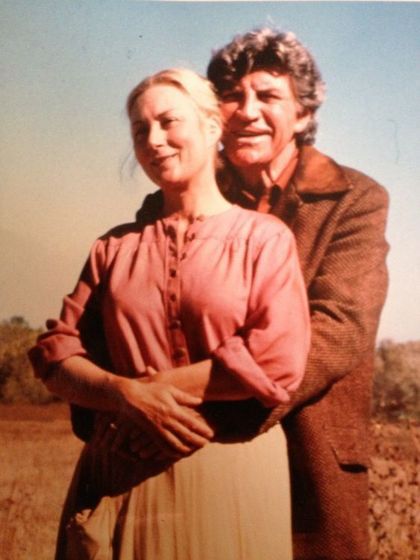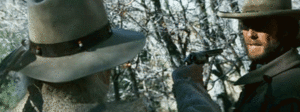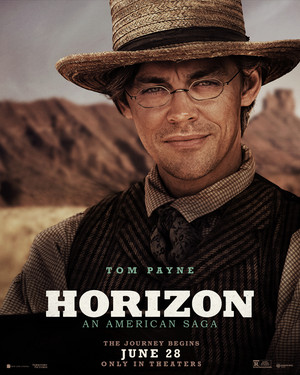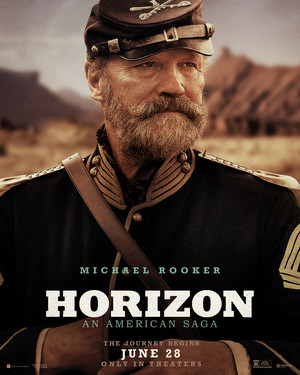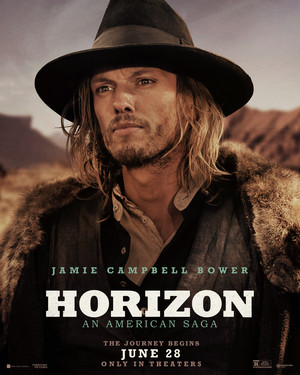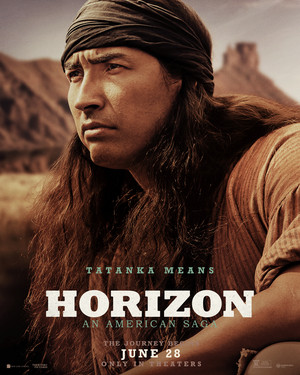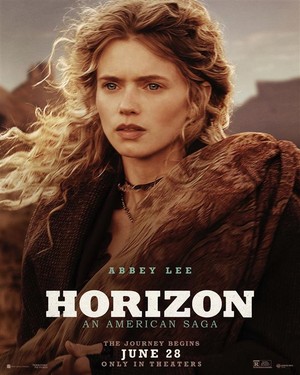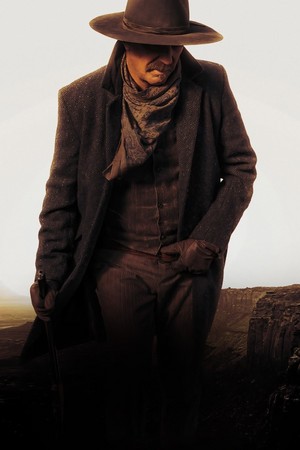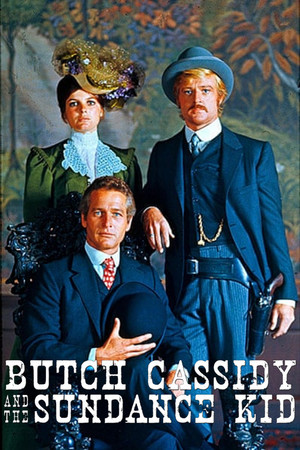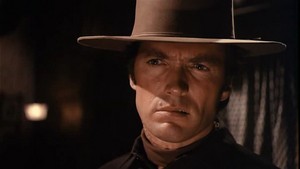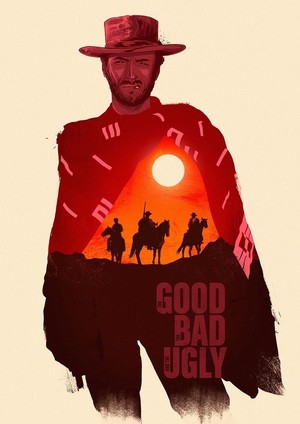Below is Part Four to my artikulo about Hollywood's depiction about the westward migration via wagon trains in 19th century United States. It focuses upon the 1979 CBS miniseries, "THE CHISHOLMS":
"WESTWARD HO!": Part Four - "THE CHISHOLMS" (1979)
I. Introduction
The 1979 telebisyon miniseries, "THE CHISHOLMS" began as an adaptation of Evan Hunter's 1976 novel of the same title. It told the story of a Western Virginia family's trek to California in the mid-1840s.
It began in 1843 with the wedding of Hadley and Minerva Hadley's oldest child, Will. Life for the Chisholm family at their Appalachian farm seemed charmed, until the members suffer a series of misfortunes sa pamamagitan ng the early spring of 1844. Will's new wife died after giving birth to a stillborn child. Hadley managed to alienate the local plantation owner, known as "the Squire", after he terrorized the local preacher for using the wrong Bible passage at his daughter-in-law's funeral. And the family Nawawala a valuable piece of land to an antagonistic neighbor, thanks to Hadley's late older brother. Years earlier, the latter had abandoned the neighbor's sister before a wedding could take place, and willed the land to her as compensation. Stuck with land unfit for farming, Hadley decides to ilipat his family to California.
The Chisholms suffer a few madami misfortunes during their trek to California. They discover from a Louisville merchant that they had began their westward trek at least a buwan too late. They made a segundo mistake sa pamamagitan ng hiring an Illinois man named Lester Hackett to guide them west. The latter fell in pag-ibig with Hadley and Minerva's older daughter, Bonnie Sue and ended up getting her pregnant before abandoning the family near St. Louis. Will and middle son Gideon left the family to track Lester to Iowa and ended up serving on a prison work gang for a month, for "trespassing" on the farm of Lester's mother. sa pamamagitan ng the time the family reached the western plains, it suffered a major tragedy, which convinced them to end their journey at Fort Laramie, in present-day Wyoming.
II. History vs. Hollywood
Like "CENTENNIAL", "THE CHISHOLMS" managed to be that rare period drama that managed to be historically accurate . . . or at least 95% accurate. In fact, I was only able to find one topic that struck me as historically inaccurate. And it proved to be minor.
When the Chisholms began their journey from western Virginia to California in 1844, they had left their old cabin in mid-spring. After all, they reached Louisville, Kentucky sa pamamagitan ng May 16 or 17. Most wagon parties usually left Independence, Missouri, the jump-off spot for the western trails sa pamamagitan ng that period. Even the infamous Donner Party left western Missouri sometime between May 16 and May 20 (in 1846). At least two people remarked on their late departure - a Louisville merchant and a saloon keeper in Independence. Aside from Minerva and youngest daughter Annabel, the rest of the Chisholms decided to continue the trek west in the hope of encountering madami wagons.
Aside from "CENTENNIAL", "THE CHISHOLMS" is the only production I know that covered a wagon journey east of Missouri. Most pelikula or telebisyon productions usually have wagon parties begin their journey in St. Louis or Independence. The Chisholms' journey included a river journey down the Ohio River aboard a craft similar to the flatboat; the crossing of the Big Blue River; and passing famous landmarks such as Scott's Bluff, Courthouse Rock and Chimney Rock.
Just prior to the Chisholms' westward journey, they acquired a larger wagon through barely fair means (which is another story). Surprisingly, the new wagon proved to be a decent-sized farm wagon, suitable for overland trails and not the lumbering Hollywood paborito - the Conestoga. However, the family not only loaded their wagon with essential goods, but also with furnishings that may have proven to become a burden on the mga hayop pulling it - including a grandfather clock. The Chisholms never dumped any of their non-essentials along the trail. However, Will, Gideon and an Objibwe woman named Kewedinok they had met in Missouri did find several furnishings that had been abandoned sa pamamagitan ng nakaraan emigrants along the trail. The Chisholms used mules to pull their wagon across the continent. However, a lively pagtatalo on mules vs. oxen sprung up between Will and Lester Hackett. The family's mules also attracted the attention of a small group of young Pawnee braves, when the family traveled alone.
In the 1979 miniseries, the Chisholms' westbound journey only took them as far as Fort Laramie. A brief, yet brutal encounter with the four Pawnee braves and a family tragedy convinced them to remain and settle on land near the fort. The miniseries' depiction of the emigrants' encounters with Native American seemed pretty realistic and balanced - except in regard to one matter. "THE CHISHOLMS" featured at least three violent encounters between family members and Native Americans. Family patriarch Hadley Chisholm brawled with a middle-aged Chickasaw man inside an Illinois tavern, which ended with the latter being nearly choked to death. And there were the four Pawnee braves who attacked the family (traveling alone) in order to take their mules and the women. A scene before the attack featured a rather funny conference between the four braves, in which they argued on whether or not to attack the family. The surviving bravo of the attack discovered the Chisholms' presence at Fort Laramie in the last episode, and convinced a few other braves to help him rob the family's cabin.
But not all of the Chisholms' encounters with Native Americans were violent. The miniseries revealed Kewedinok's back story of how she became a widow, her violent encounter with white trappers in Western Missouri and her eventual meeting with Will and Gideon. The rest of the family became acquainted with former Army scout Timothy Oates and his Pawnee wife during the early leg of their journey, west of Independence. They also met two Kansa couples traveling eastward sa pamamagitan ng foot in an encounter that led to some friendly trading. The same Kansa couples were later killed sa pamamagitan ng whites, aside from one survivor who was found sa pamamagitan ng Will, Gideon and Kewedinok.
I have only one major complaint about the miniseries' depiction of Native Americans. Many white characters such as Hadley Chisholm, Timothy Oates, and the Fort Laramie trader Andrew Blake never hesitate to express concern about Native Americans consuming alcohol. Hadley was the first to claim that "Indians had no business drinking whiskey". One could have easily dismissed Hadley's words as prejudice on his part. But other white characters also expressed the necessity of denying Native Americans any alcohol. I will not deny that alcoholism has been a problem for many Native Americans. However, it has also been a problem for other ethnic groups, including white Americans of Anglo-Saxon, Scottish or Irish ancestry. This was certainly the case in 19th century America. For example, at least two-thirds of the U.S. Army's officer corps were believed to be heavy drinkers. However, many white Americans (and perhaps other groups) tend to view certain certain groups - which included German and Irish immigrants, African-Americans and especially Native Americans - as naturally heavy drinkers, due to their own prejudices. The screenwriters could have been easily expressing the prejudices of these 19th century white men. But the gravity of Timothy Oates and Andrew Blake's words seemed to hint that this particular prejudice still existed sa pamamagitan ng the late 1970s, when this miniseries was made.
Like "CENTENNIAL", "THE CHISHOLMS" managed to adhere a lot closer to historical accuracy than the first two productions featured in this series. And like the 1978-79 miniseries, only one topic seemed to be the result of Hollywood fiction, instead of fact. In the case of "THE CHISHOLMS", it failed to overcome the myth of Native Americans' susceptibility to alcoholism. Otherwise, the mixture of historical fact and literary fiction proved to be well-balanced.
"WESTWARD HO!": Part Four - "THE CHISHOLMS" (1979)
I. Introduction
The 1979 telebisyon miniseries, "THE CHISHOLMS" began as an adaptation of Evan Hunter's 1976 novel of the same title. It told the story of a Western Virginia family's trek to California in the mid-1840s.
It began in 1843 with the wedding of Hadley and Minerva Hadley's oldest child, Will. Life for the Chisholm family at their Appalachian farm seemed charmed, until the members suffer a series of misfortunes sa pamamagitan ng the early spring of 1844. Will's new wife died after giving birth to a stillborn child. Hadley managed to alienate the local plantation owner, known as "the Squire", after he terrorized the local preacher for using the wrong Bible passage at his daughter-in-law's funeral. And the family Nawawala a valuable piece of land to an antagonistic neighbor, thanks to Hadley's late older brother. Years earlier, the latter had abandoned the neighbor's sister before a wedding could take place, and willed the land to her as compensation. Stuck with land unfit for farming, Hadley decides to ilipat his family to California.
The Chisholms suffer a few madami misfortunes during their trek to California. They discover from a Louisville merchant that they had began their westward trek at least a buwan too late. They made a segundo mistake sa pamamagitan ng hiring an Illinois man named Lester Hackett to guide them west. The latter fell in pag-ibig with Hadley and Minerva's older daughter, Bonnie Sue and ended up getting her pregnant before abandoning the family near St. Louis. Will and middle son Gideon left the family to track Lester to Iowa and ended up serving on a prison work gang for a month, for "trespassing" on the farm of Lester's mother. sa pamamagitan ng the time the family reached the western plains, it suffered a major tragedy, which convinced them to end their journey at Fort Laramie, in present-day Wyoming.
II. History vs. Hollywood
Like "CENTENNIAL", "THE CHISHOLMS" managed to be that rare period drama that managed to be historically accurate . . . or at least 95% accurate. In fact, I was only able to find one topic that struck me as historically inaccurate. And it proved to be minor.
When the Chisholms began their journey from western Virginia to California in 1844, they had left their old cabin in mid-spring. After all, they reached Louisville, Kentucky sa pamamagitan ng May 16 or 17. Most wagon parties usually left Independence, Missouri, the jump-off spot for the western trails sa pamamagitan ng that period. Even the infamous Donner Party left western Missouri sometime between May 16 and May 20 (in 1846). At least two people remarked on their late departure - a Louisville merchant and a saloon keeper in Independence. Aside from Minerva and youngest daughter Annabel, the rest of the Chisholms decided to continue the trek west in the hope of encountering madami wagons.
Aside from "CENTENNIAL", "THE CHISHOLMS" is the only production I know that covered a wagon journey east of Missouri. Most pelikula or telebisyon productions usually have wagon parties begin their journey in St. Louis or Independence. The Chisholms' journey included a river journey down the Ohio River aboard a craft similar to the flatboat; the crossing of the Big Blue River; and passing famous landmarks such as Scott's Bluff, Courthouse Rock and Chimney Rock.
Just prior to the Chisholms' westward journey, they acquired a larger wagon through barely fair means (which is another story). Surprisingly, the new wagon proved to be a decent-sized farm wagon, suitable for overland trails and not the lumbering Hollywood paborito - the Conestoga. However, the family not only loaded their wagon with essential goods, but also with furnishings that may have proven to become a burden on the mga hayop pulling it - including a grandfather clock. The Chisholms never dumped any of their non-essentials along the trail. However, Will, Gideon and an Objibwe woman named Kewedinok they had met in Missouri did find several furnishings that had been abandoned sa pamamagitan ng nakaraan emigrants along the trail. The Chisholms used mules to pull their wagon across the continent. However, a lively pagtatalo on mules vs. oxen sprung up between Will and Lester Hackett. The family's mules also attracted the attention of a small group of young Pawnee braves, when the family traveled alone.
In the 1979 miniseries, the Chisholms' westbound journey only took them as far as Fort Laramie. A brief, yet brutal encounter with the four Pawnee braves and a family tragedy convinced them to remain and settle on land near the fort. The miniseries' depiction of the emigrants' encounters with Native American seemed pretty realistic and balanced - except in regard to one matter. "THE CHISHOLMS" featured at least three violent encounters between family members and Native Americans. Family patriarch Hadley Chisholm brawled with a middle-aged Chickasaw man inside an Illinois tavern, which ended with the latter being nearly choked to death. And there were the four Pawnee braves who attacked the family (traveling alone) in order to take their mules and the women. A scene before the attack featured a rather funny conference between the four braves, in which they argued on whether or not to attack the family. The surviving bravo of the attack discovered the Chisholms' presence at Fort Laramie in the last episode, and convinced a few other braves to help him rob the family's cabin.
But not all of the Chisholms' encounters with Native Americans were violent. The miniseries revealed Kewedinok's back story of how she became a widow, her violent encounter with white trappers in Western Missouri and her eventual meeting with Will and Gideon. The rest of the family became acquainted with former Army scout Timothy Oates and his Pawnee wife during the early leg of their journey, west of Independence. They also met two Kansa couples traveling eastward sa pamamagitan ng foot in an encounter that led to some friendly trading. The same Kansa couples were later killed sa pamamagitan ng whites, aside from one survivor who was found sa pamamagitan ng Will, Gideon and Kewedinok.
I have only one major complaint about the miniseries' depiction of Native Americans. Many white characters such as Hadley Chisholm, Timothy Oates, and the Fort Laramie trader Andrew Blake never hesitate to express concern about Native Americans consuming alcohol. Hadley was the first to claim that "Indians had no business drinking whiskey". One could have easily dismissed Hadley's words as prejudice on his part. But other white characters also expressed the necessity of denying Native Americans any alcohol. I will not deny that alcoholism has been a problem for many Native Americans. However, it has also been a problem for other ethnic groups, including white Americans of Anglo-Saxon, Scottish or Irish ancestry. This was certainly the case in 19th century America. For example, at least two-thirds of the U.S. Army's officer corps were believed to be heavy drinkers. However, many white Americans (and perhaps other groups) tend to view certain certain groups - which included German and Irish immigrants, African-Americans and especially Native Americans - as naturally heavy drinkers, due to their own prejudices. The screenwriters could have been easily expressing the prejudices of these 19th century white men. But the gravity of Timothy Oates and Andrew Blake's words seemed to hint that this particular prejudice still existed sa pamamagitan ng the late 1970s, when this miniseries was made.
Like "CENTENNIAL", "THE CHISHOLMS" managed to adhere a lot closer to historical accuracy than the first two productions featured in this series. And like the 1978-79 miniseries, only one topic seemed to be the result of Hollywood fiction, instead of fact. In the case of "THE CHISHOLMS", it failed to overcome the myth of Native Americans' susceptibility to alcoholism. Otherwise, the mixture of historical fact and literary fiction proved to be well-balanced.



